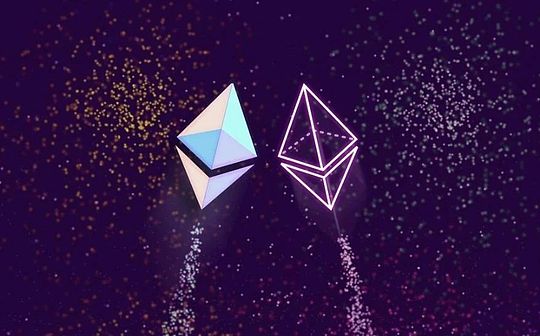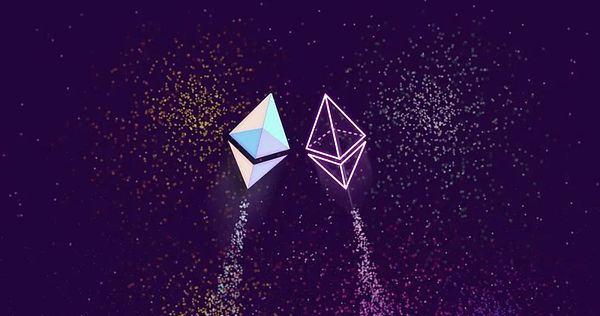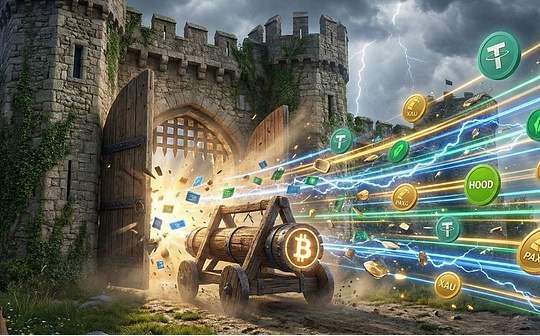
Proposal on encapsulating ZK-EVM
Recently, Ethereum founder Vitalik Buterin proposed to encapsulate ZK-EVM to Ethereum’s L1.The goal of the proposal is to create a native system in the Ethereum protocol, leveraging zero-knowledge proof to validate Ethereum blocks.
The main purpose of fusing ZK-EVM to the core of Ethereum is to reduce the blockchain’s dependence on external code bases, thereby reducing the risks associated with these system vulnerabilities.The proposal shows that encapsulating ZK-EVM at the protocol level and making ZK-EVM a core component of Ethereum, representing the enhanced blockchain framework structure that can improve the security, efficiency and processing speed of Ethereum network operations.
This integration is also consistent with Ethereum’s multi-client concept, which supports different customers to use various proof systems.Encapsulated ZK-EVM is a strategic update to Ethereum infrastructure, aiming to address scalability, privacy and efficiency challenges, thereby supporting Ethereum’s growth and adaptation to future needs.
ZK-EVM Use Cases
One use case of ZK-VM (ZK virtual machine) is Ploygon zkEVM,Similar to a “turbocharged engine” for blockchain applications, it works with Ethereum, but is faster and cheaper.This virtual machine uses zero-knowledge proof to process transactions, speeding up and cutting costs while building on Ethereum’s strong security.
Polygon zkEVM combines SNARKs and STARKs technologies to make transaction processing efficient and fast.SNARKs help make data smaller, saving space and cost, while STARKs speed up the process of proving transactions legitimacy.By running several of these proof generators simultaneously, Polygon zkEVM can process more transactions at once, making the entire system faster and smoother.
Another example is Linea, a ZK-EVM with complete EVM equivalent that is compatible with most decentralized applications on Ethereum.Therefore, developers can port their DApps from Ethereum to Linea without extensive modifications.This compatibility can be extended to migrating code back to Ethereum or other EVM-compatible blockchains, enhancing Linea’s adaptability and interoperability within the broader blockchain ecosystem.
Since it is an EVM equivalent, it is similar to Ethereum’s mainnet, providing developers with a platform that enables them to create and use smart contracts in familiar environments.This similarity is very friendly to developers accustomed to Ethereum, who are able to leverage Linea without having to make a lot of tweaking their workflows.
Developers migrate to EVM chain
Electric Capital’s latest report illuminates the shift that is taking place in the blockchain space: a large number of developers are flocking to EVM-compatible chains.The report notes that 87% of multi-chain developers are already working on at least one EVM-compatible network.This shows that EVM chains are very attractive to developers, and developers are willing to spend time and effort on them.
Not only do developers work on one chain, they also spread their ideas and code in different EVM-compatible chains.The EVM ecosystem is the most active area for developers.The reason why EVM chains attract developers is simple: For beginners, these EVM blockchains incorporate Ethereum standards and protocols, allowing developers to adapt easily.They can use their original knowledge and technology to reduce the time and effort required to enter the industry.
For example, EOS EVM acts as a bridge between EOS and the Ethereum ecosystem, allowing developers to bring Solidity-based projects, digital assets and DApps from Ethereum to integrate into the EOS ecosystem.This approach can leverage Ethereum’s rich ecosystem and mature tools and combine them with feature-rich EOS.
EVM also supports Websocket, a tool for developing applications that require real-time back and forth with the server (using regular HTTP requests usually have delays).This means developers can build faster and better interactivity applications directly on EOS EVM, such as chat applications, real-time trading platforms, DeFi notifications, and NFT casting tracking.

Ethereum, its toolbox and community support, gives developers access to documents, ready-made smart contract templates, and coding enthusiast forums.These abundant resources make it easier to build, experiment and innovate.In addition to ease of use, cost and scalability are also important.As Ethereum gas fees sometimes soar, developers are looking for places to build programs while avoiding high costs.
EVM-compatible blockchains can often offer lower costs and higher performance, which makes them very attractive to participants who want to deploy DApps or smart contracts.Additionally, the rise of L2 solutions and sidechains means stronger scalability and lower costs while staying friendly with Ethereum’s ecosystem.
There are many projects that migrate to the EVM chain, such as Polylgon and Binance Smart Chain, which are both active places for DeFi projects and the NFT market, and are also conducive to developers’ construction, cost savings and attracting a wider audience.In fact, developers themselves are also thinking strategically, and they are looking for the best platform to combine technologically acumen, economically meaningful and audience range.The shift to EVM-compatible blockchain is not only a trend, but also a move by developers to maximize the potential of blockchain, with a focus on efficiency, scalability, and opportunities to connect with more users.
EVM as a cost-effective alternative
Flipside, a blockchain data research platform, believes that EVM has become a wallet-friendly option in the blockchain field, points to a big trend: given the obstacles such as Ethereum’s high gas fees and network congestion, the market is looking for a smoother alternative.plan.
Users and developers prefer EVM-compatible L2 networks, arguably the need for lower transaction costs and faster processing time drives this option.Flipside believes that this is not just a brief trend.The market is undergoing a shift, and promoting Ethereum alternatives that are compatible with EVM is a major trend in the industry, as keeping costs down and increasing efficiency is key to the blockchain industry.
New players and ecosystems may emerge in the process as developers and users flock to platforms that strike the right balance between cost efficiency and performance.This could lead to a more diverse blockchain ecosystem, i.e. a variety of blockchain and L2 solutions, developing together, providing developers and users with more options.
The prospects for EVM chains and Ethereum will continue to evolve, aiming to address scalability and cost-reducing upgrades.EVM chain will continue to adapt to its development with the launch of Ethereum improvement solutions.As the Ethereum ecosystem grows, such as environmental impact, governance and how different systems work together, will play a more important role.Furthermore, Ethereum and EVM-compatible chains work seamlessly are critical to a blockchain ecosystem that achieves efficiency and user experience without sacrificing security or decentralization.
Flipside believes the rise of EVM is a budget-friendly alternative, and this trend is boosting the competitive environment and accelerating the drive for innovation that could lead to the birth of new platforms and ecosystems.As the blockchain space continues to evolve, sustainability, governance and interoperability will become increasingly important in shaping the future success of EVM chains and Ethereum.In this trend, adaptability, efficiency and inclusion will be the most critical aspects.
summary
Ethereum and its underlying technology, EVM, are undergoing some major changes.This is a stage of opportunity for developers, investors, and for blockchain enthusiasts.With more and more blockchains compatible with EVM and the emerging innovations in Ethereum, the ever-expanding EVM ecosystem is opening new doors for exploration, development and investment.
Innovations like ZK-EVM make Ethereum more scalable and private, making it a better place to develop decentralized applications.Whether you want to create a DeFi platform, create a unique NFT experience, or use a new blockchain application, EVM tools can offer unlimited possibilities.








